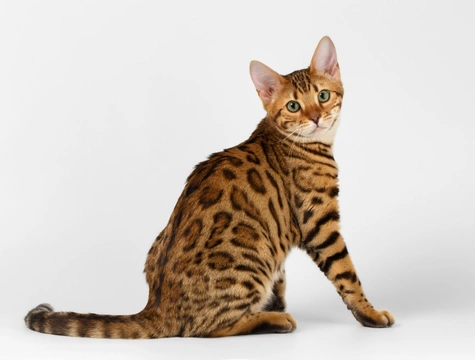
Physical changes in male cats after castration
If you own a male cat or kitten that you do not intend to breed from, it is important to have them castrated when they are old enough. Castration helps to prevent unwanted sexual behaviours, avoid unwanted litters and remove some potential health and safety risks too, such as testicular cancer in later life, or injuries that can be caused from roaming and fighting with other male cats.
The actual castrate procedure itself is very quick, simple and straightforward for cats, and is performed in just a few minutes-the recovery time too is very short, and once your cat comes round after their op, they will be largely unaware that anything has happened, and get back to normal pretty much the same day!
Every cat owner knows that castration will make their male cats less likely to roam, fight and yowl at all hours of the day and night, but castration can also cause or prevent certain physical changes in your cat too, which once again, can be a positive thing!
In this article we will look at some of the physical changes that you may see in your cat after castration, or that you may have already observed in your own cat. Read on to learn more.
The obvious…
First of all, the one obvious change that you will see in your cat after their procedure is the absence of their testicles, which will be very noticeable to you, but something that your cat will be pretty much unaware of!
Physical shape
It is a common myth that castrated male cats are apt to get fat, but your cat’s change in physical activity after the operation can lead them to change shape, and potentially, put on a little weight.
A male cat that is not castrated will be highly active and roam a lot, sometimes wandering off for a day or more at a time, and covering a lot of ground when they go out and about looking to mate or patrolling their territory. Because this urge is removed in the neutered cat, your cat will likely not be as hyperactive after the operation, and so, will need to eat less to maintain their condition.
Castrated cats may also take on a slightly rounder and less lean shape too, as they will simply not be covering as many miles roaming around each day!
Head shape
A mature un-neutered male cat will often develop a fairly round, broad head by the time they are two or three years old, due to the level of testosterone and other sex hormones coursing through their bodies. Neutering before the age of one year old usually means that your cat’s head and face will not widen up to the level that it might if they were not neutered-however, if your cat is castrated as an adult, their heads may already be rather wider and this is not something that is reversed by the castration procedure.
Grooming
While most cats are fastidious about their grooming and dedicate a lot of time to it, this is sometimes not the case with the average tomcat! If your cat spends the larger portion of their day patrolling their territory, looking for a mate and generally being very busy due to having only one thing on their minds, they are apt to develop a rather unkempt appearance, and slightly neglect their grooming.
This is often only particularly pronounced in longhaired cat breeds like the Persian that can soon become matted, knotted up and scruffy looking if they go a few days without being groomed or taking care of their own coats, but after castration, you might be pleasantly surprised to see that your male cat suddenly becomes very fastidious about keeping their coat in good order!
Stud tail
Finally, one physical manifestation that can be seen in some tomcats before they are castrated is a phenomenon called “stud tail.” Stud tail presents as a mucky, greasy or generally dirty-looking spot or patch of hair at the base of the cat’s tail, which usually only occurs in (some) unneutered male cats, but only very rarely in neutered males or females.
This is due to the production of sebum and grease from the sebaceous glands at the base of the tail, which tomcats use to spread their scent around to warn other males off their territory, or let females know that they are receptive to breeding. While “stud tail” usually just looks rather grubby and messy, it can also smell rather foul too, and because of the excessive sebum production in the tail area too, it can lead to clogged pores, blackheads and even hair loss.
Castrating your cat will either prevent the development of stud tail entirely if your cat is castrated while they are young, or if your cat is older and already displaying stud tail, it will clear up the condition and allow the skin to settle down.



